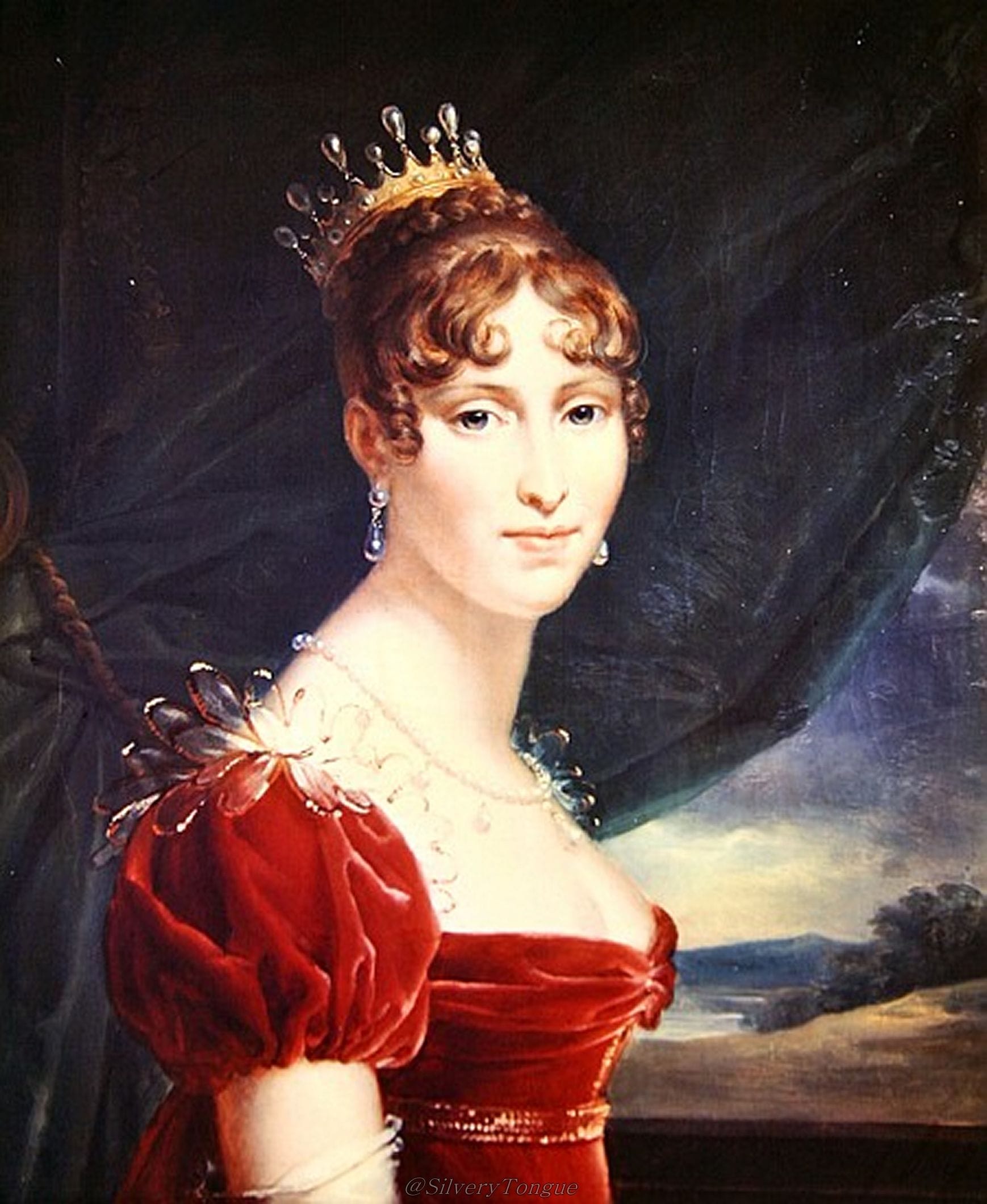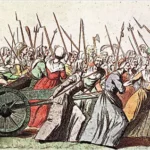Hortense de Beauharnais: Navigating Revolution and Empire
Hortense de Beauharnais, often a forgotten figure in Napoleonic history, led a remarkably eventful life. As Napoleon’s stepdaughter, a queen, and the mother of an emperor, she navigated the complexities of European politics and left her own unique mark. Born amidst the French Revolution, she experienced both immense privilege and profound hardship, shaping her into a resilient woman of influence. This is her story—a tale of love, loss, and legacy.
A Childhood Forged in Revolution
Born in 1783, Hortense’s early years were indelibly marked by the French Revolution. The execution of her father, Alexandre de Beauharnais, during the Reign of Terror likely instilled in her a deep understanding of life’s precarious nature. Sent to Madame Campan’s school, she received an education that probably fostered adaptability and resilience, traits that would serve her well in the tumultuous years to come. This early exposure to upheaval may have inadvertently prepared her for the challenges and uncertainties of her future.
A Queen by Napoleon’s Design
Hortense’s life became intertwined with Napoleon Bonaparte’s ambitions. In 1802, she married Napoleon’s brother, Louis Bonaparte—a union orchestrated for political gain rather than affection. This marriage elevated her to Queen of Holland in 1806, a position she likely never desired. Caught between the demands of her powerful stepfather and the needs of her Dutch subjects, Hortense faced constant challenges. The death of her eldest son compounded her difficulties, adding personal grief to her political burdens. Louis’s abdication in 1810, possibly driven by Napoleon’s interference and marital discord, released Hortense from her unwanted royal duties.
Finding Freedom in Exile
Napoleon’s fall had profound consequences for Hortense. Exiled to Switzerland, she found refuge at Arenenberg Castle. This retreat, perhaps initially perceived as a punishment, may have become her liberation. Away from the pressures of court life, Hortense could explore her artistic passions. She devoted herself to music, writing, and painting, transforming Arenenberg into a vibrant salon that attracted artists and intellectuals. This period suggests a flourishing of her creative spirit, a testament to her resilience and ability to find purpose even in exile. Delve into the captivating life of David Ben-Gurion, prime minister of Israel, a pivotal figure in the nation’s formation.
A Legacy of Art, Motherhood, and Influence
Hortense died in 1837, but her story continued through her son, Louis-Napoleon, who became Emperor Napoleon III of France. Did her influence shape his ambition? Historians continue to explore this question. Hortense’s legacy is multifaceted. While her reign as queen was brief and reluctant, her artistic pursuits, the salon she cultivated, and her role as a mother to an emperor are significant contributions to history. Hortense’s life, interwoven with the Napoleonic era, demonstrates that even in the shadow of great figures, individual stories can resonate powerfully. Uncover the intriguing story of Drusilla of Mauretania the Elder and her connection to the Roman Empire.
The Bonaparte-Beauharnais Union: Hortense, Louis, and Napoleon’s Dynasty
Hortense de Beauharnais, Joséphine’s daughter, married Napoleon’s brother, Louis Bonaparte, in a grand ceremony in Paris on January 3, 1802. However, the lavish wedding masked the political motivations behind the union. This strategic alliance, likely orchestrated by Joséphine and Napoleon, aimed to consolidate power and secure their positions. Joséphine probably saw the marriage as a way to strengthen her ties to Napoleon, while Napoleon possibly viewed it as a means of extending his influence by placing family members in key positions.
For young Hortense, the marriage was life-altering. It thrust her onto the European political stage as Queen of Holland, a role that masked her personal unhappiness. The marriage was reportedly strained, with Hortense’s lively personality clashing with Louis’s more reserved demeanor. Historians suggest the marriage was particularly difficult for Hortense, who may have yearned for a love match. The couple had three sons, two of whom died young. Their surviving son, Charles Louis Napoleon Bonaparte, would later become Napoleon III. This politically motivated marriage, therefore, had unforeseen consequences, shaping the future of France in ways no one could have predicted. Ongoing research continues to explore the complexities of their relationship and its impact on their family and the political landscape.
| Individual | Relationship to Hortense | Relationship to Napoleon |
|---|---|---|
| Joséphine de Beauharnais | Mother | First Wife |
| Napoleon Bonaparte | Stepfather | Emperor of the French |
| Louis Bonaparte | Husband | Brother |
| Napoleon III | Son | Nephew |
While the exact reasons for their unhappiness remain somewhat elusive, the pressures of court life and the ever-present influence of Napoleon likely played a significant role. Further research may reveal more nuanced details about their marriage and its lasting impact.
The Exile and Legacy of Hortense Bonaparte: Queen of Holland, Mother of an Emperor
Hortense de Beauharnais’s life was a journey marked by unforeseen twists and turns. Following Napoleon’s downfall, her life took a dramatic shift. Stripped of her royal title, she initially found refuge in France, in the Duchy of Saint-Leu. However, growing anti-Bonapartist sentiment forced her to flee again, this time seeking sanctuary in Switzerland. This transition marked a significant change in her life, from the grandeur of a queen to the quiet solitude of exile.
In 1817, Hortense arrived at Arenenberg Castle on the shores of Lake Constance. This became her new home, a sanctuary where she could rebuild her life away from political turmoil. At Arenenberg, Hortense transformed herself into a patron of the arts. She embraced painting, writing, and music, finding solace and self-expression in these creative pursuits. Her resilience is evident in her ability to adapt and thrive despite adversity.
Although her royal aspirations were over, Hortense’s influence endured through her son, Louis-Napoleon. She dedicated herself to his upbringing, possibly instilling in him the ambition that would propel him to become Emperor Napoleon III. Hortense’s story is one of contrasts: privilege and hardship, royalty and exile, loss and resilience. Even after her death from cancer in 1837, her influence persisted, woven into the fabric of French history. She was not merely a queen or Napoleon’s stepdaughter; she was a woman who forged her own path, leaving a mark that transcends her royal connections. Some historians suggest her time at Arenenberg was a period of significant personal growth and artistic flourishing, while others emphasize her role as a mother in shaping the future Napoleon III.
| Key Events in Hortense’s Life |
|---|
| 1783 |
| 1802 |
| 1806 |
| 1810 |
| 1814 |
| 1817 |
| 1837 |
Our understanding of historical figures like Hortense is constantly evolving. New research and interpretations may offer further insights into her life and motivations. While we can construct a narrative based on existing records, some aspects of her inner life remain unknown, making the study of history all the more captivating.
Napoleon and Josephine: Children, Marriage, and Dynasty
Napoleon and Josephine did not have biological children together. This seemingly simple fact had profound implications for their lives and French history. It strained their marriage and fueled Napoleon’s dynastic ambitions. Josephine, however, had two children, Eugène and Hortense, from her previous marriage to Alexandre de Beauharnais. Their lives, already touched by the Revolution, became further entwined with Napoleon’s rising power.
Hortense became a key figure in this family drama. In 1802, she married Napoleon’s brother, Louis Bonaparte, in a strategic alliance designed to strengthen family ties and advance Napoleon’s influence. This politically motivated marriage produced three sons, one of whom, Charles-Louis-Napoléon Bonaparte, became Napoleon III. Ironically, Josephine, unable to provide Napoleon with an heir, indirectly secured the Bonaparte dynasty through her daughter.
The immense pressure on Napoleon to produce an heir likely contributed to his decision to annul his marriage to Josephine and marry Marie Louise of Austria, who bore him a son, Napoleon II. This act, prioritizing dynasty over personal affection, may have had a significant impact on public perception of Napoleon.
After Napoleon’s downfall, Hortense sought refuge at Arenenberg Castle in Switzerland. There, she nurtured her artistic passions and raised her son, the future Napoleon III, shaping the next generation of Bonaparte leadership. Hortense’s life, marked by political maneuvering and personal sacrifices, reveals her resilience and reminds us that individuals can shape their destinies even amidst historical upheaval. Her story is more than a footnote in the Napoleonic saga; it is a testament to human adaptability and creativity.
- Mastering Leader in Spanish: The Complete Guide - April 19, 2025
- Uncovering Surprising Parallels: England Size Compared to US States - April 19, 2025
- Old Mexico Map: Border Shifts 1821-1857 - April 19, 2025

















1 thought on “Hortense de Beauharnais: A Life in the Shadow of Napoleon”
Comments are closed.